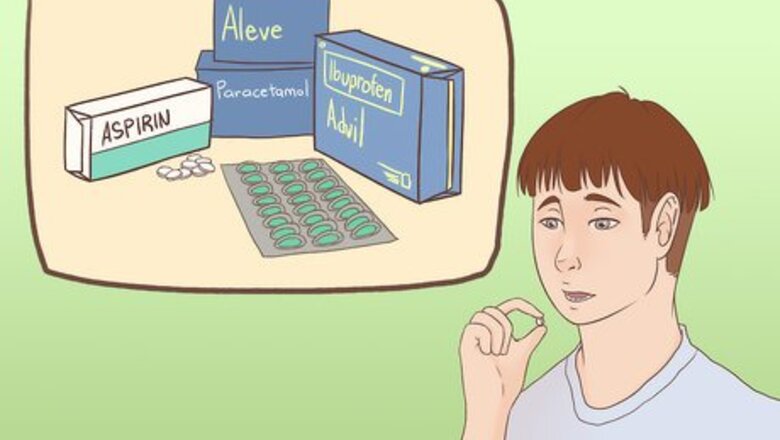
views
X
Trustworthy Source
Cleveland Clinic
Educational website from one of the world's leading hospitals
Go to source
Dealing with the pain at home is certainly possible and can be effective, but it's usually just a short-term fix before having to see a dentist.
Alleviating Toothaches at Home
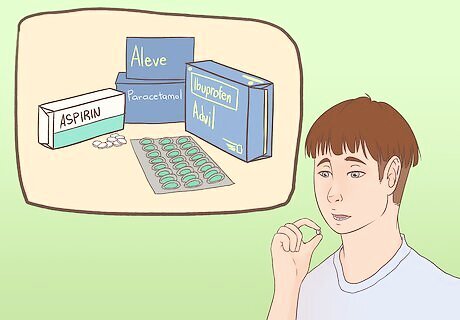
Take over-the-counter (OTC) medication. If the toothache starts suddenly for no obvious reason and doesn't go away within an hour or so, consider using OTC medication before getting the tooth checked out. Anti-inflammatories such as ibuprofen (Motrin, Advil), naproxen (Aleve) or aspirin are likely best for toothaches that involve significant inflammation — common with gingivitis and mild mouth trauma. Painkillers are likely better for toothaches without much swelling, such as nerve irritation and tooth decay. The most common OTC painkiller is acetaminophen (Tylenol, Paracetamol). Don't place aspirin or painkillers directly against the gums because it can burn or irritate the gum tissue. It may also cause an allergic reaction if you are allergic to substances in the product. Acetaminophen, and not aspirin or ibuprofen, should be used for infants and children with toothaches. Anti-inflammatories and painkillers should always be short-term strategies for pain control. Taking too much of them at a time or taking them for too long increases your risk of stomach, kidney and liver problems. Visit a dentist as soon as possible before the problem gets worse and more painful.
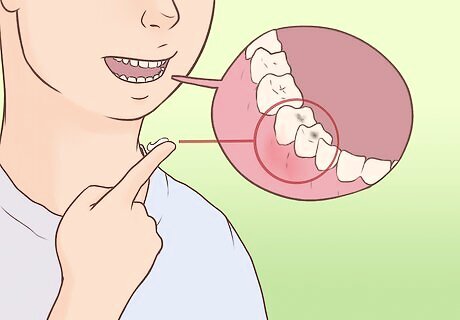
Use an OTC topical anesthetic. Sparingly apply an OTC antiseptic gel, cream or ointment that contains benzocaine, a mild anesthetic that causes localized numbing. Put it directly onto the achy tooth and surrounding gum tissue for temporary relief — up to a few hours usually. While the medication is absorbing into the tissue, try not to swallow much of it as it can numb the throat and cause nausea. Breathing through your mouth for a few minutes can help reduce the need to swallow. Use caution with products containing benzocaine because it can lead to a rare condition called methemoglobinemia, which reduces the amount of oxygen the blood can carry. Don't use benzocaine on kids younger than two years of age without medical supervision. OTC benzocaine products are just meant for short-term use prior to seeing a dentist.

Apply a cold compress. If the toothache is caused by mouth trauma to the tooth, identify where the majority of the pain and inflammation is coming from and apply a cold compress to the outside of the cheek. Applying cold therapy is effective for swelling because it reduces blood flow by constricting (narrowing) local blood vessels. It also tends to numb the pain for a while. A cold compress can be made with crushed ice, ice cubes, frozen gel packs or a small bag of frozen veggies. Always wrap anything frozen in a thin cloth before you apply it to skin — this will prevent skin irritation and frostbite. Apply the cold compress for about 15 minutes three to five times daily until the inflammation/toothache subsides or fades away. Significant trauma to the mouth and teeth should be examined by a dental professional as soon as you can make an appointment — make sure you tell the dentist it is an emergency so you can be seen right away.

Rinse your mouth with warm, salty water. Perhaps the most simple and inexpensive way to combat some types of toothache is to swish your mouth out with some warm salty water. Swishing the water around the achy area can disinfect it and provide soothing relief. It can also help to dislodge any potentially irritating debris stuck between the teeth. Salt water also draws out some fluid from the gums that cause swelling. Add a teaspoon of sea salt into a cup of boiling hot water and let it cool down until there's no risk of burning your mouth. Then take a mouthful and swish it around for at least 30 seconds or more before spitting it out. Take a second mouthful to swish and also gargle with it for a few seconds before spitting it out. Repeat this procedure three to five times daily until the pain fades away or you can see a dentist. If you don't have sea salt, then table salt is also an effective antiseptic, but it doesn't contain any trace minerals which may contribute to pain relief. Keep in mind that the pain may return after a few days and it may be even more intense. If this is the case, see your dentist right away.
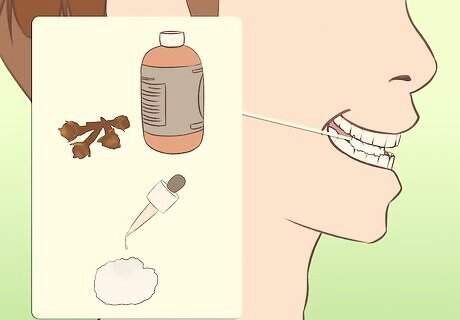
Consider using oil of cloves. Another traditional home remedy for alleviating toothache is applying oil of cloves (active ingredient is eugenol, a natural anesthetic). Apply the oil to a small cotton ball or piece of tissue and then place it directly onto or against the achy tooth and surrounding gums to numb the area. Biting down on the cotton ball might be more effective as it will hold it in place firmly. Clove oil needs to be used carefully because it's pretty strong and can irritate sensitive gums/tongues/lips if poured directly onto them. Oil of cloves is found in virtually all health food stores and most mainstream pharmacies. As an alternative, consider using some powdered clove or a whole clove on the tooth. Chew the clove to release its oil and numb the area.
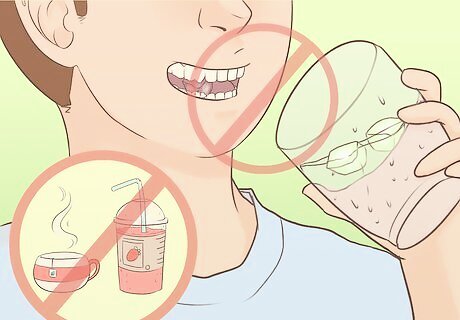
Avoid hot or cold foods and drinks. For some people, toothaches can be caused by exposure to very hot or cold foods and beverages. The nerve roots are overly sensitive and can generate pain with sensations at the extreme ends of the spectrum. As such, avoid drinking hot coffee and teas, slushy drinks and beverages with ice. Don't chew on ice if you have a toothache — it might help with any inflammation, but it will likely also irritate the nerve roots and increase the pain. Avoid hot soups, stews and casseroles, at least until they've cooled down. The first sign of tooth decay may be pain sensations in teeth while eating something exceptionally hot or cold. In addition to ice cubes, crunching on hard nuts, seeds and beans can also exacerbate toothaches and potentially cause more damage to broken teeth.

Stay away from anything overly sweet. In addition to extreme temperatures (hot/cold), excessively sweet foods and beverages can also cause or acerbate toothaches. It's the refined sugar that can further irritate decay from cavities and exposed nerve roots, so fruits are usually okay to eat. On the other hand, don't eat candy floss, toffee, chocolate bars, fudge, donuts, ice cream or really sweet baked goods. Avoid drinking soda pop and sweetened iced tea or coffee drinks. Hard candy can be a "double whammy" to toothaches: very sweet and hard enough to do damage to cracked teeth or poor dental work. Even healthy snacks, such as granola bars, can be problematic for toothaches due to the honey, sweet raisins and dates, and hard nuts.
Getting Dental Care
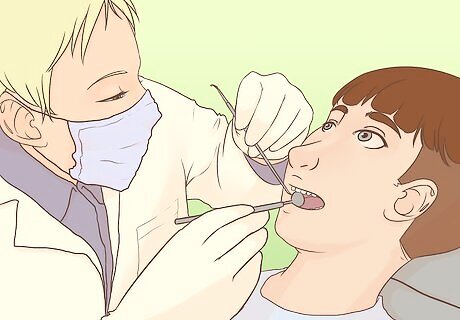
Consult with your dentist. Not every little twinge of pain in your mouth requires a dental exam, but many toothaches don't go away and get progressively worse with time. As such, schedule an appointment with your dentist if you have: tooth pain that persists for more than a few days; signs of an infection, such as lots of swelling, increased pain when you bite, red inflamed gums and/or the presence of white pus mixed with blood; trouble breathing or swallowing; any kind of fever combined with the pain. Your dentist will examine your mouth and likely take dental x-rays. Cavities, abscesses, gingivitis, cracked teeth and uneven wear are all common causes of pain that can be treated at your dentist's office. Tell your dentist if you or your child had any recent mouth trauma.

Get a cavity filled. Tooth decay happens when the enamel is destroyed by bacteria and other factors, such as excessive acidity and wear. Pits or cavities appear in teeth and achy or sharp pain develops when the nerves are irritated. If your dentist sees a cavity, they will recommend filling it. Fillings restore teeth damaged by decay back to their normal function and shape. Materials used for fillings include gold, porcelain, composite white resins and amalgams (alloys of mercury, silver, copper, tin and zinc). Before you get a filling, your dentist will first remove the decayed part and sanitize the area. You'll get an injection of anesthetic to kill the pain. Your toothache may also be caused by a previous filling that's come loose or cracked and allowed more bacteria in. There are growing health concerns regarding the use of amalgam fillings (due to the mercury content), so ask your dentist what's the best material for your long-term health.
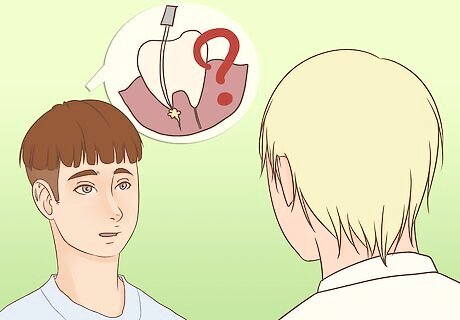
Ask about a root canal. Root canals are often necessary when the pulp (soft tissue inside the root canal) becomes inflamed or infected. The inflammation or infection has many potential causes: bacterial decay, too many dental procedures, and/or trauma to the tooth. If pulp infection is left untreated, it can cause pain or lead to an abscess (larger infection that involves pus). In addition to a moderate-to-severe toothache, other signs that you may need a root canal include: tenderness with chewing, fever, discoloration of the tooth, being unable to open your mouth (trismus), or tenderness in nearby lymph nodes. There is some controversy surrounding root canals because it's very difficult to completely sterilize a root-canaled (root-filled) tooth, which can provide protected space for bacteria to grow and release toxins into the bloodstream. There are a variety of root canal procedures, so ask your dentist about the pros and cons of their technique.
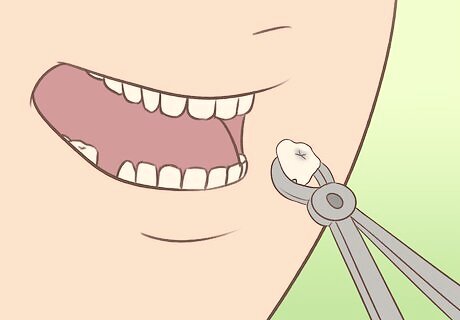
Get a tooth pulled as a last resort. Sometimes an achy tooth has to be pulled (extracted) if it's damaged and/or decayed too severely. This usually isn't a problem with a young child who still has their milk teeth, because the permanent teeth will simply grow in and fill the void eventually. With adults, it's a more serious procedure, although crowns, caps, dentures and artificial teeth are advanced enough that most people never feel or notice a difference (aside from no more pain!). Some teeth (such as wisdom teeth) are not as essential for chewing or as cosmetically important, so these can be pulled without much concern; however, you should make every effort to save the teeth at the front of your mouth. Health insurance plans don't often include the entire cost of dental care, so make sure to check with your provider.
















Comments
0 comment